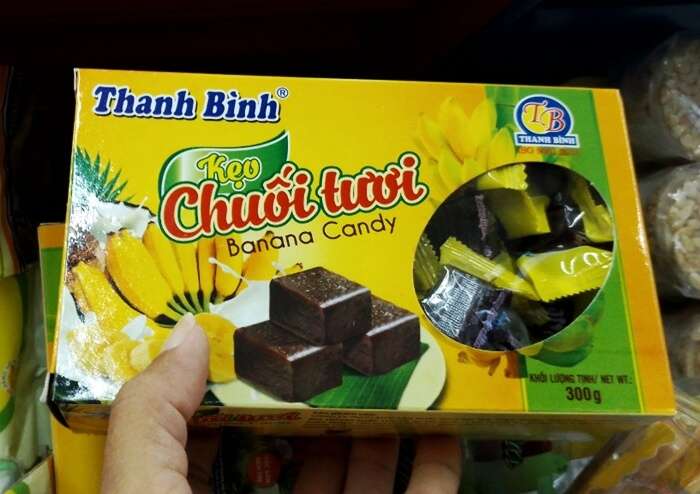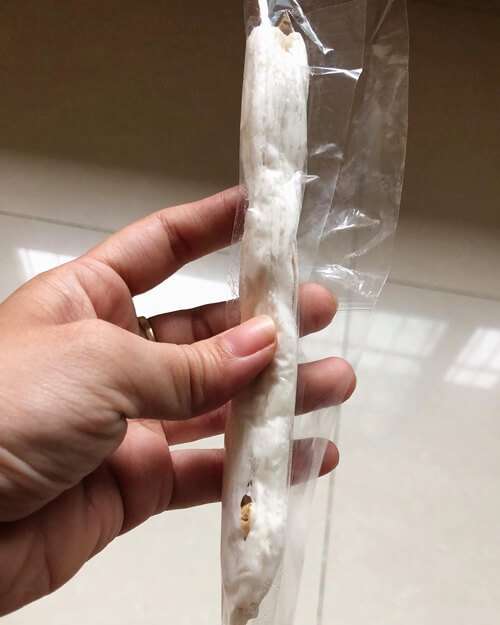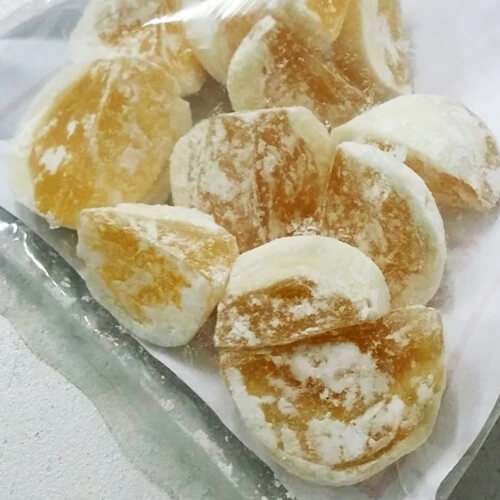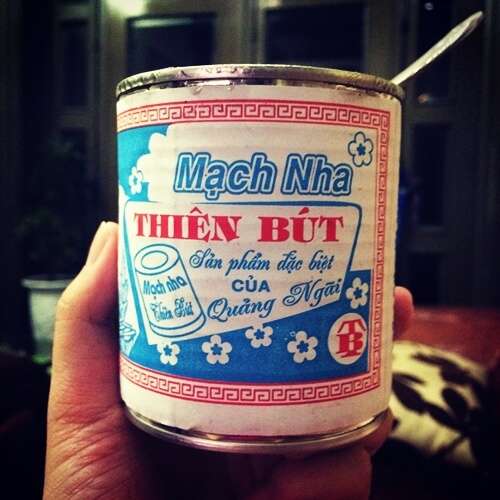Vietnamese candy is popular among adults, locals, and visitors and comes in a wide variety of varieties and forms. In order to assist you appreciate the sweetness of this delectable food, we’d like to introduce you to the well-known Vietnamese sweets that are processed using a semi-handcrafted technique.
1. Ben Tre candy with coconut (vietnamese candy)

The coconut grown in Ben Tre, the nation’s coconut granary, is well known for its sweet and fragrant flavor, making the coconut candy it produces always the most well-liked. Coconut candy that is delicious. The major ingredients in this type of candy are coconut milk, malt, and sugar. Today, in addition to the traditional ingredients listed above, this candy is also combined with other ingredients to create a variety of flavors, including pandan coconut candy, durian coconut candy, and peanut coconut candy.
The most well-known of which is pandan coconut candy, which comes in the two colors of green and brown. This product is available in the majority of Vietnamese supermarkets. And if you want to experience the production process, you can sign up for a Mekong tour with Ben Tre as the destination. However, in warm temperatures, coconut candy is prone to melting. Additionally, because of the oil around the candy, it frequently adheres to your hands and hurts to peel.
2. Sesame candies (vietnamese candy)

Sesame candy from Hue is the next addition to the list of delectable treats in Vietnam. Worthy is a delightful present for everyone who comes to this city. Colorful sesame candies. Hue sesame candy is made with sesame, peanuts, malt, glutinous flour, and filtered tapioca as ingredients.
These straightforward ingredients come together to provide a sweet, fragrant, and delectable marshmallow that both residents and visitors enjoy. Sesame candy’s flexible nature makes it challenging to chew, which is a drawback. Humorous remarks about this candy not being appropriate for those with dentures are common. You may easily find these candy packages in Hue city’s local and large shopping areas. The cost of a package is merely around 20,000 VND.
3. Candy Cu Do (vietnamese candy)

A well-known Ha Tinh province delicacy, Cu Do candies make an intriguing souvenir for travelers to this windy and sunny region. Ha Tinh is known for Cu Do candy. @nguyenthuha1910 Cu Do in Ha Tinh appears more like a cake when two pieces of rice paper are used as a visual sandwich, yet it is still referred to as a candy because cane sugar provides the majority of its sweetness.
In addition, the roasted peanuts with their complete seeds inside will taste greasy. crunchy and fragrant from the exterior rice paper. Everything meshes together flawlessly. Cu do candies, however, are tough, especially when you put them in the fridge to keep them fresh.
So be careful while selecting new candies, and refrain from devouring them right away after removing them from the refrigerator. This product typically comes in 450-gram packages and costs between 50,000 and 60,000 VND.
4. Candy bananas (vietnamese candy)

A common regional dish in the regions of the Mekong Delta is banana sweets. Two common variations of this dessert include a traditional one that is often sliced into finger-sized rectangles and a spherical roll of puff pastry. Candy made from bananas. The color of banana candy is a blend of the black-brown of processed bananas and the yellow of peanuts.
Flexible, flavorful, and simple to chew. Particularly, the curled banana candies enhance the exterior crunch of the puffy rice paper wrappers. Since this confection is often made without preservatives, its shelf life is quite brief—between three and five days at ambient temperature and one month when refrigerated.
Due to the handmade nature of their production, these candies occasionally have variable quality, are simple to burn due to an excess of slugs, and have a bitter aftertaste. Typically, a small container of banana candy costs between 15,000 and 20,000 VND. If you visit the Mekong Delta, particularly the South Vietnamese provinces of Ben Tre or Dong Thap, give it a try.
5. Candy peanuts (vietnamese candy)

The majority of Vietnam’s center and northern provinces, particularly Quang Ngai, Quang Nam, Da Nang, Thanh Hoa, Nam Dinh, and Hanoi, are immensely fond of peanut candies. Vietnamese peanut candies. @ngoctu1603 The confection is flavorful from the roasted sesame and peanuts, sweet from the sugar, and sticky from the malt.
The cook chooses each bean with care because even a few broken beans can ruin the flavor and amount of a whole package of sweets, making it uncomfortable for the consumer to consume. As roasted peanuts and sesame seeds were manually processed and packaged in the past, they were easily burned and cooked unevenly.
Today, many businesses use machines to complete several important steps, which has increased the quality of this sweet. Peanut candies are frequently packaged with care, making them easy to transport as gifts. Each box costs only about 20,000 VND, which is a really good deal.
6. Areca sweets (vietnamese candy)
Areca candy, a specialty food from Hue, dazzles everyone with its shape like an areca fork-and-four. It may have gotten its name because in English, Keo Cau means areca candy. The typical areca candy. The candy used to contain a tiny bit of actual areca, but since the flavor is unpleasant to consume, cane sugar has replaced it as the primary ingredient.
The cover is milky white and incredibly eye-catching, and the sugar is expertly treated to create the yellow center. The taste of areca candy is quite sweet. The candy is a little firm, though, making it difficult to chew; it is frequently used to suck. You can easily find it in the sweets shop in Dong Ba market for only 10,000 VND for each small bag.
7. Keo Keo (vietnamese candy)

Another intriguing sweet produced by hand in Vietnam is this one. People will yank out candy till it is the size of a finger while eating. This candy is known as Keo Keo, which means pull candy, because of the pulling motion. Keo Keo unique with peanut inside. @queen coach Sugar and peanuts are the only components in this dessert.
The sugar is processed by repeatedly dragging and dropping it, giving it a lovely milky white hue. Inside are peanuts and sugar. The chewy, nutty, and sweet flavors of marshmallows all produce intriguing emotions. Keo Keo is challenging to locate because it is rarely available in major markets. Young folks occasionally perform a few songs to promote this confectionery at the neighborhood restaurants.
8. Doi Lac Candy (vietnamese candy)

As can be seen, Keo Doi Lac, also known as Pea Roll Candy in English, is the sibling of the pull candy seen above. Doi Lac Candy, however, is prepared more expertly, is more porous, and contains more peanuts. Candy Doi Lac. @lydotra If Keo Keo candy is difficult to locate since it is only manufactured by hand, Doi Lac candy is widely available despite being a specialty of Nam Dinh, a region in northern Vietnam.
Doi Lac candy comes in really attractive packaging. Due to the rising demand, several candy producers use semi-manufacturing techniques to provide consumers with more products. The cost of a bag is about 25,000 VND. The candy does have a strong aroma of banana oil, which we don’t particularly like.
9. Powdered sugar (vietnamese candy)

In the sugarcane-growing regions of central Vietnam, particularly in Quang Ngai, Quang Nam, and Binh Dinh, powder candy is regarded as a common treat. Sweet Keo Bot @thanhthuy.ngo1997 Powdered candies are produced entirely by hand and have a covering of rice or flour on the outside to keep them from sticking.
Some places also refer to this as candy. Keo U due to their large and sturdy shape. Keo Bot is created with black or brown sugar, which is produced domestically from sugarcane, not the white sugar used in other Vietnamese candies. Ginger is added to powdered sweets, giving the mixture a very pleasant scent. Simply let the candy to melt in your mouth as it is quite firm and tough to eat.
The powder candy gradually envelops the mouth with a ginger flavor as well as a little spicy, sweet, and fragrant flavor. You won’t be able to purchase this treat in Saigon or Hanoi’s malls. You could be fortunate enough to stumble across them in a few small roadside sweets stores only when you drive through Quang Ngai or Quang Nam.
10. Maltesers (vietnamese candy)

A well-known specialty of Quang Ngai, a central region that is still relatively unknown to foreign tourists, is malt candy. This sweet is the most malleable of the Vietnamese candies mentioned above and has a typical flexibility. a malt beverage can. @bidipi__ Rice germ and cane sugar are the main ingredients of malt candy, which is kept in cans, much like condensed milk in Vietnam.
When eating, locals frequently pick up each roll with chopsticks and lay it out evenly on the baked rice paper before savoring it. Many individuals find baked rice paper and the crisp aroma of concentrated sweetness of malt candy to be an appealing snack. Malt candy’s flaw is that it is overly flexible, making it challenging to remove from the container and eat with chopsticks or other tools.
It is also incredibly sweet, so those of you who are worried about gaining weight should avoid it. Additionally, it is quite sticky, making it unsuitable for people who also wear dentures. The price of malt candy varies based on quality and ranges from 30,000 to 50,000 VND each can.
